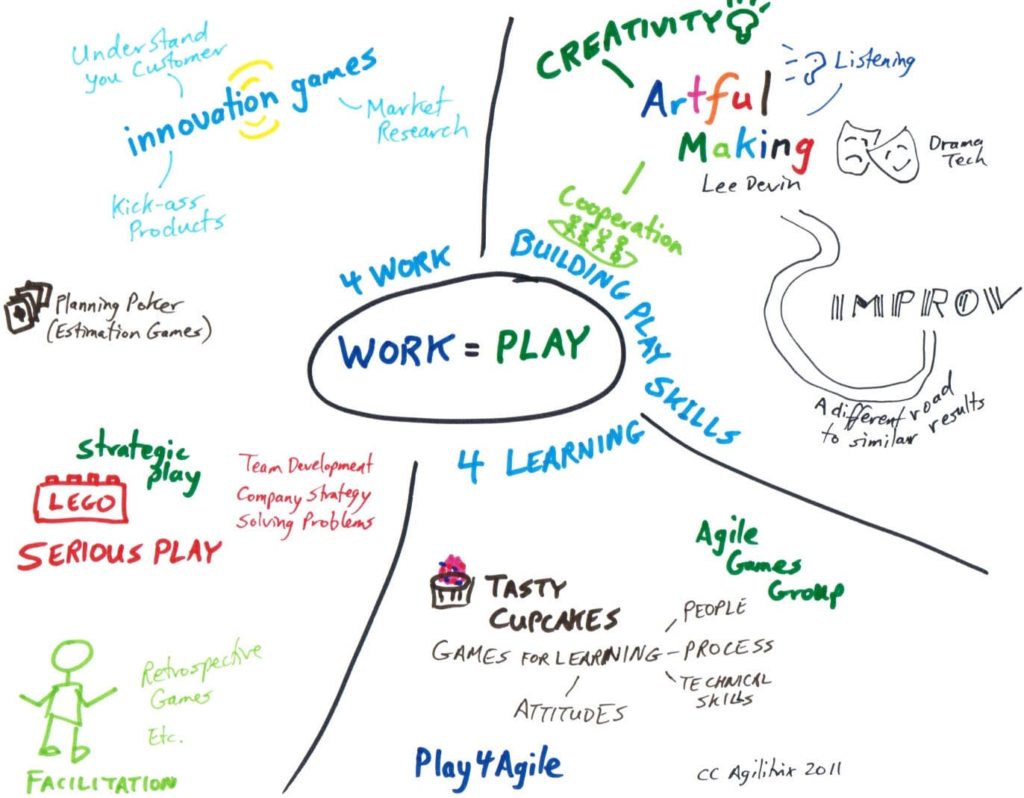Play is a profoundly powerful tool for achieving business results. I think of three main ways to accomplish this: Using explicit play to do work, using play for learning, and building people’s play muscles.
Consider the following diagram:

Play for Work
The goal is here is to take difficult, boring, unproductive work and create great results through play. In the diagram, I give a few examples of how to make work through play:
- Innovation Games® have a proven track record of using play to help companies understand their customers and build innovative products.
- Planning Poker is a well-established team based estimation technique that is now complemented by other estimation games.
- Lego® Strategic Play® is a hands-on activity for solving tough problems, team development and creating company strategy.
- The world of facilitation provides a host of engaging activities from team retrospectives to Open Space.
For more information, check out some ways I help clients with bring play to work.
Play for Learning
I have been very involved in games to assist people learning about Agile, Lean, etc. I made a helpful diagram that shows different types of games and what they can be used for. Probably the best place to go to find a game is TastyCupcakes.org – it’s a community-driven and has an ever-growing collection of games. I even volunteer my time to make it better for everyone – that’s how much I care and believe in play as a powerful dynamic.
Of course, play goes well beyond Agile through folks such as training master Thiagi and GameStorming. (Both are on my to-learn list)
Building Play Skills
What if you want to build the skills of your team or organization to harness play as part of daily work? To have play and creativity permeate everyone and everything? For this, your best bet comes from dramatic techniques such as ArtfulMaking and DramaTech. Also, strongly recommended are Improv skills. You may notice that these are not just about creativity, they are also about listening and collaboration as an added bonus.


